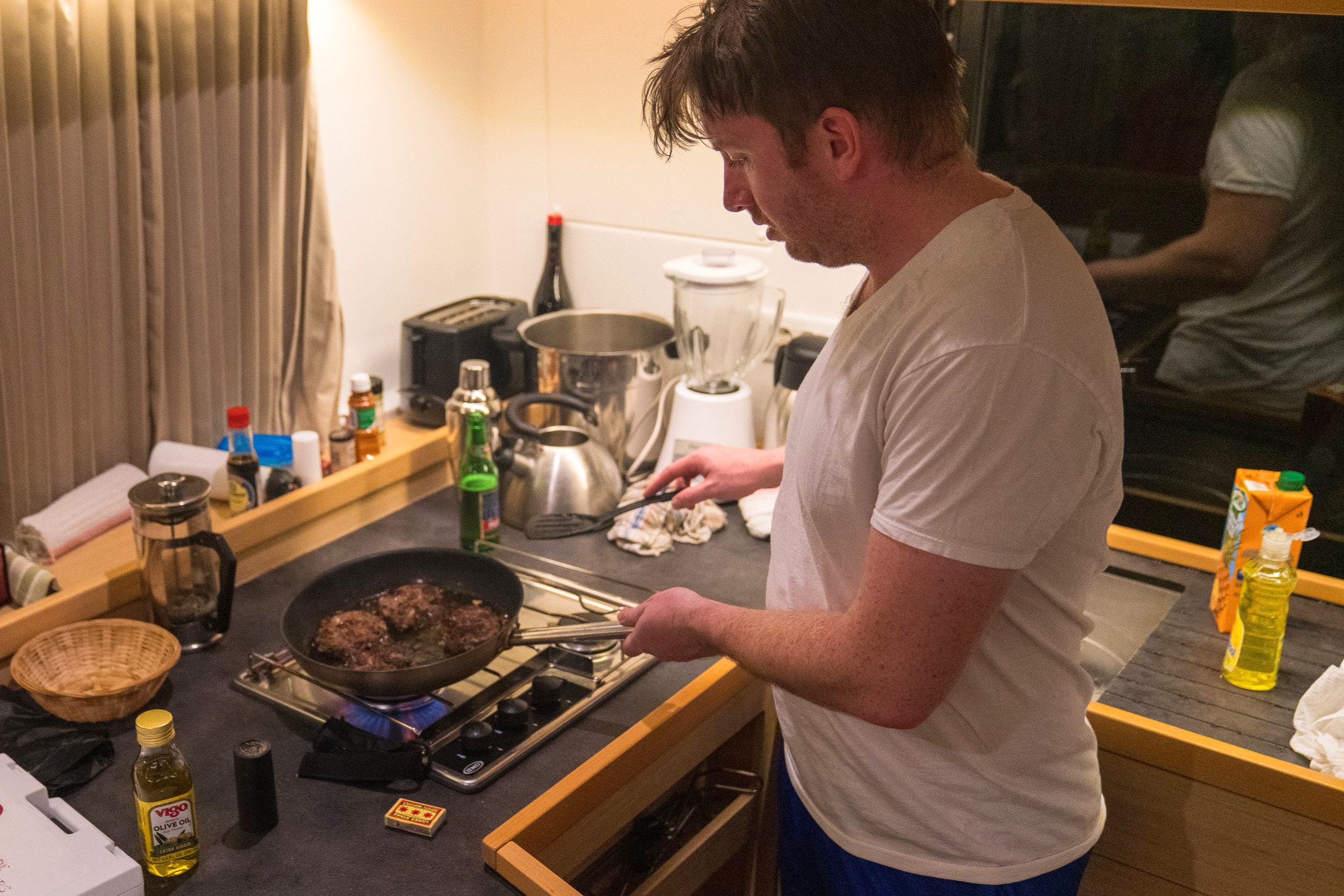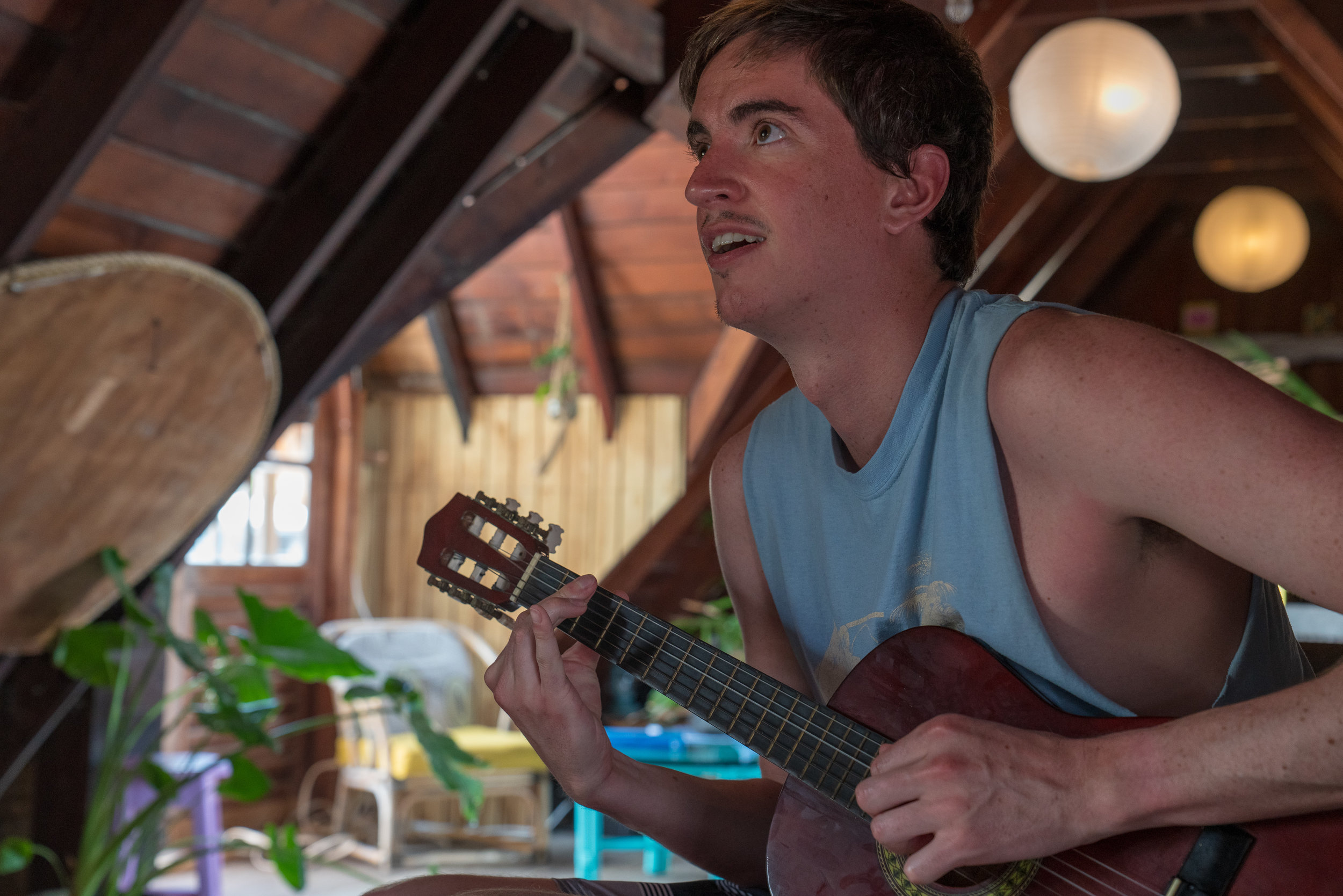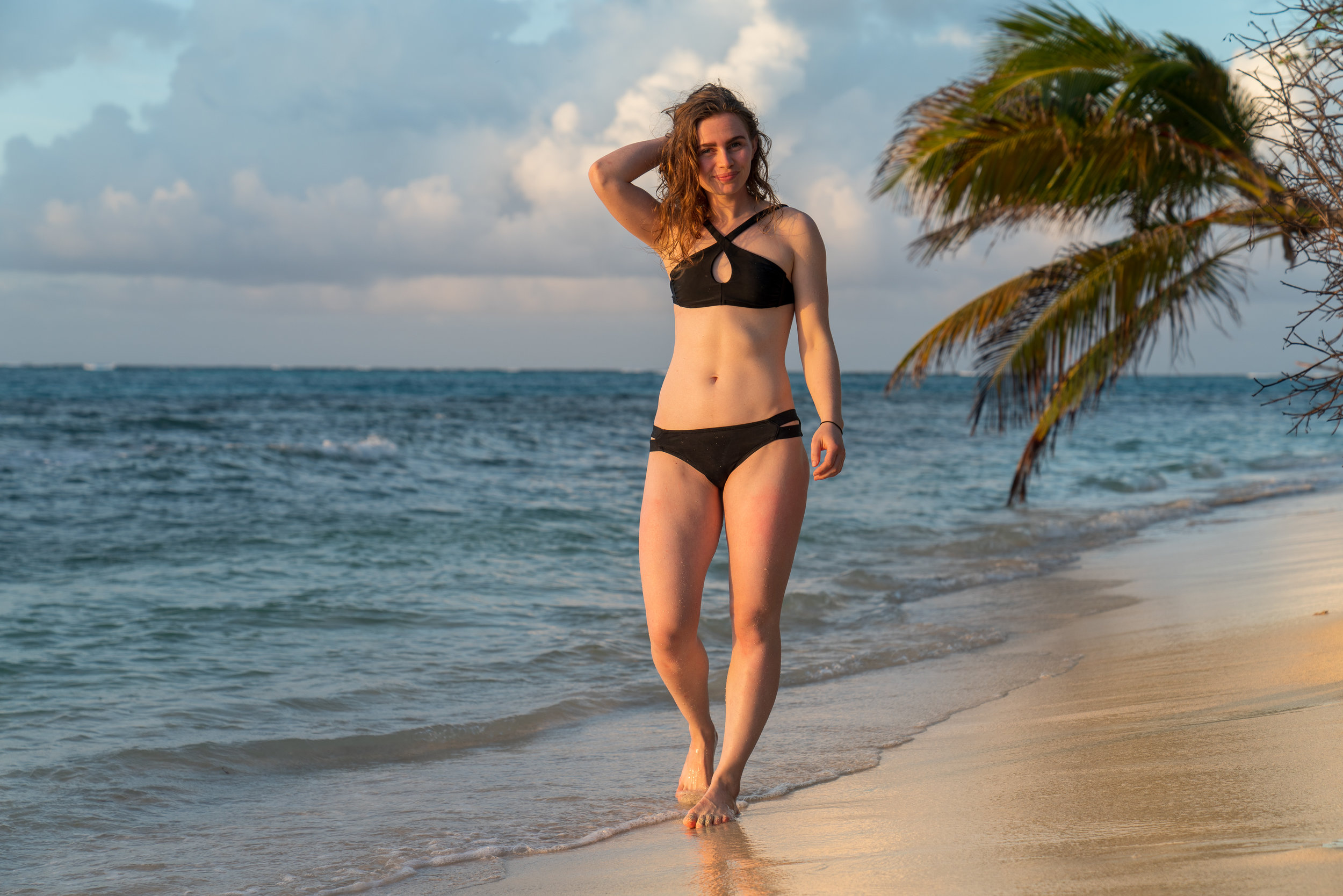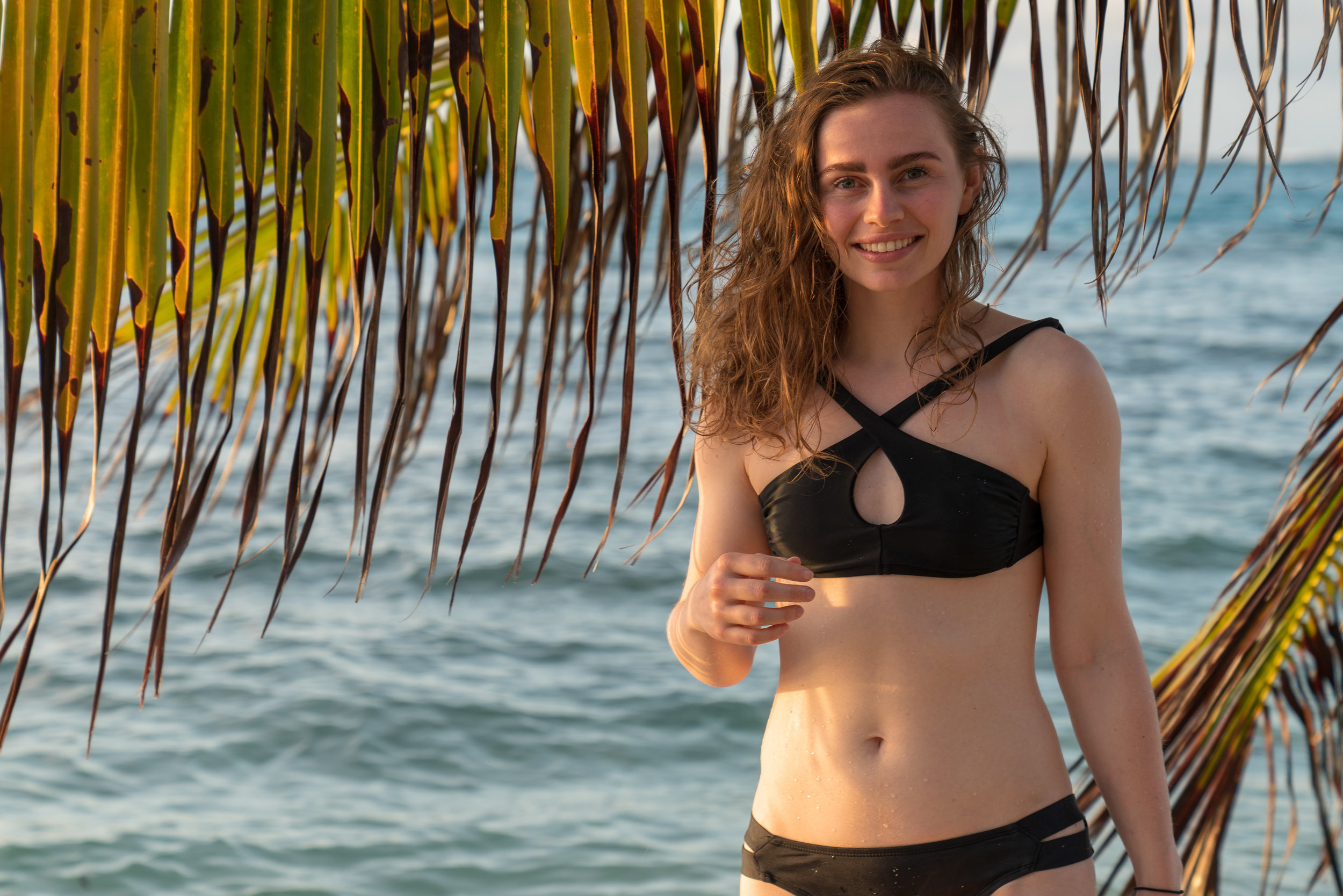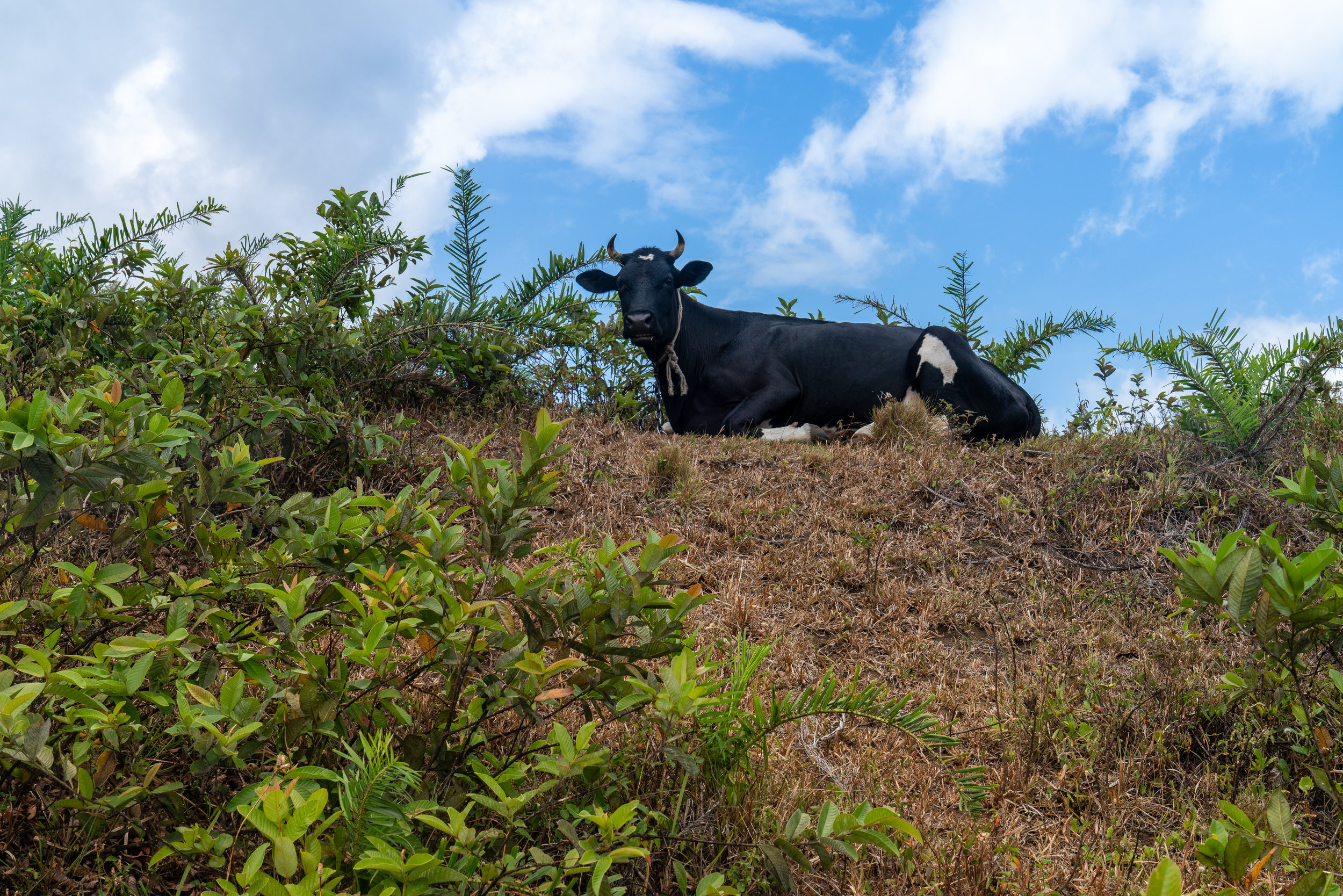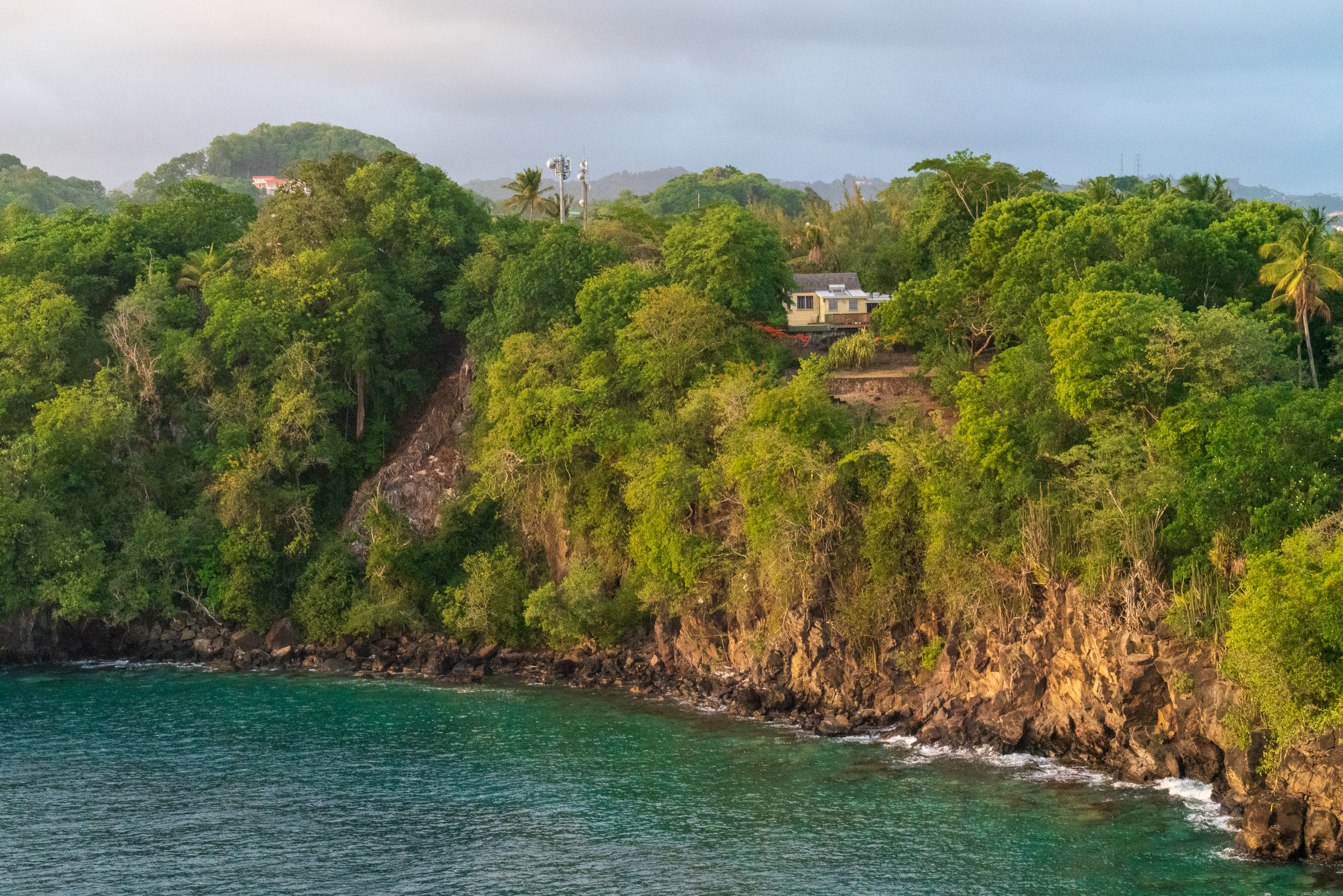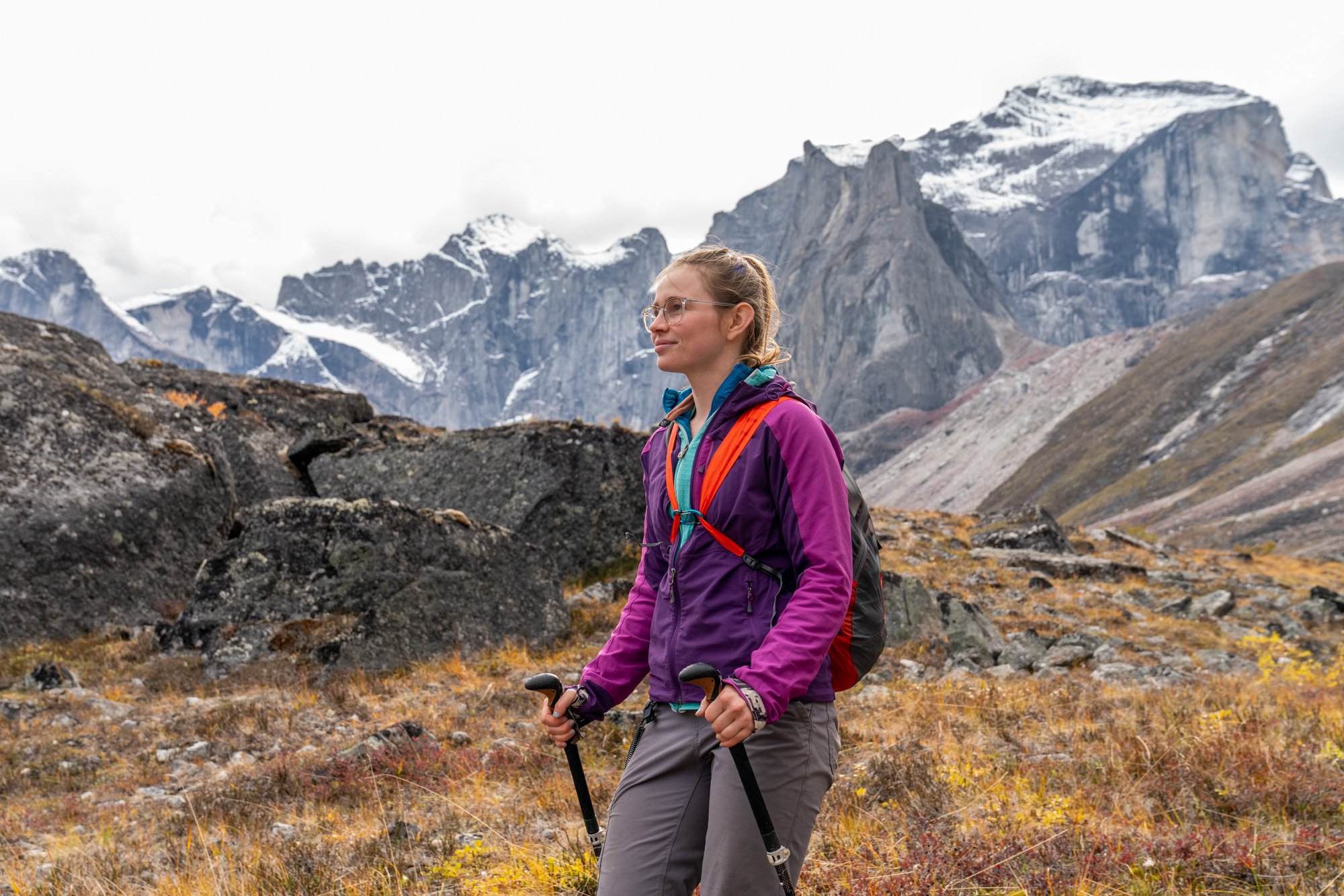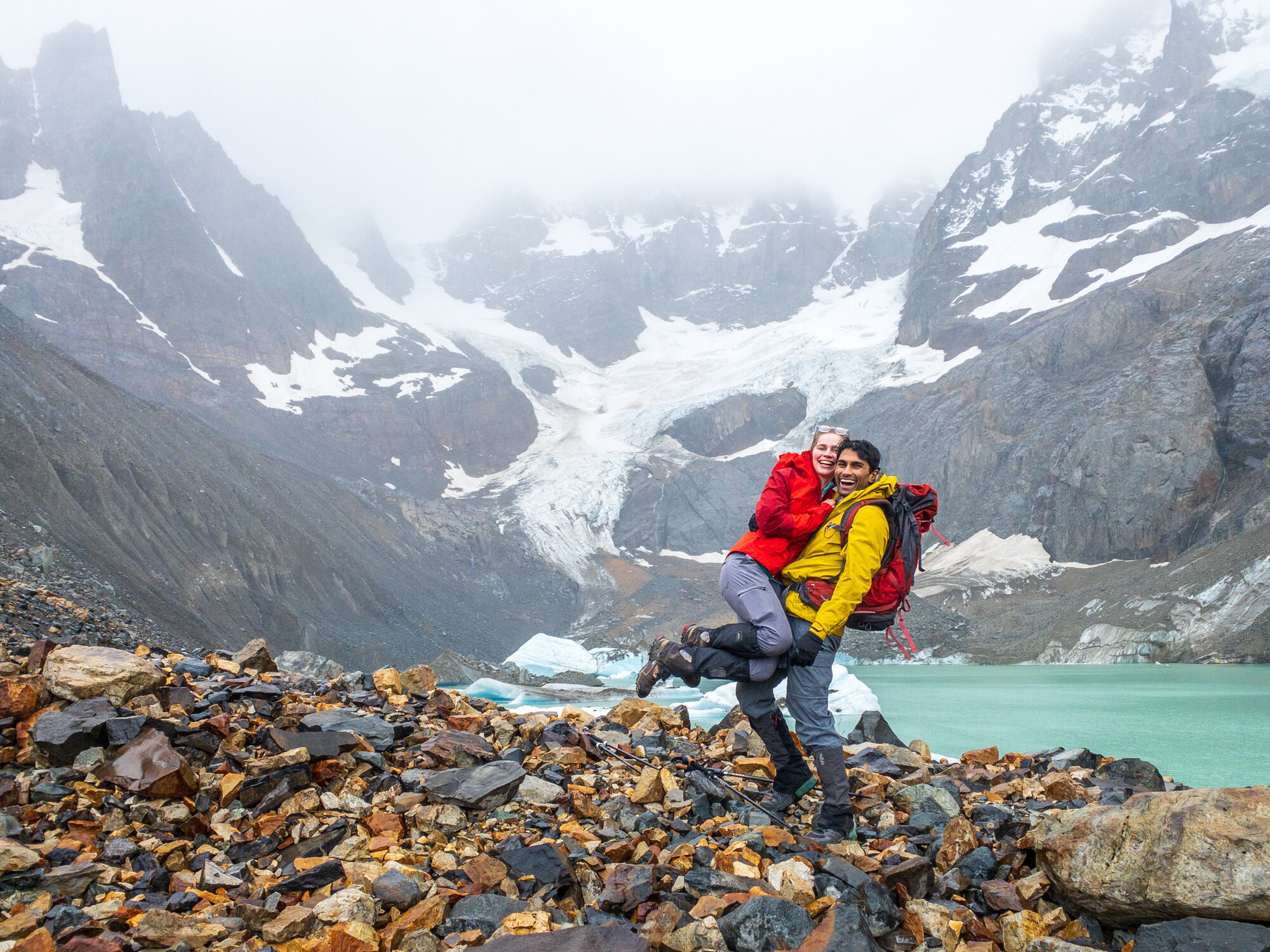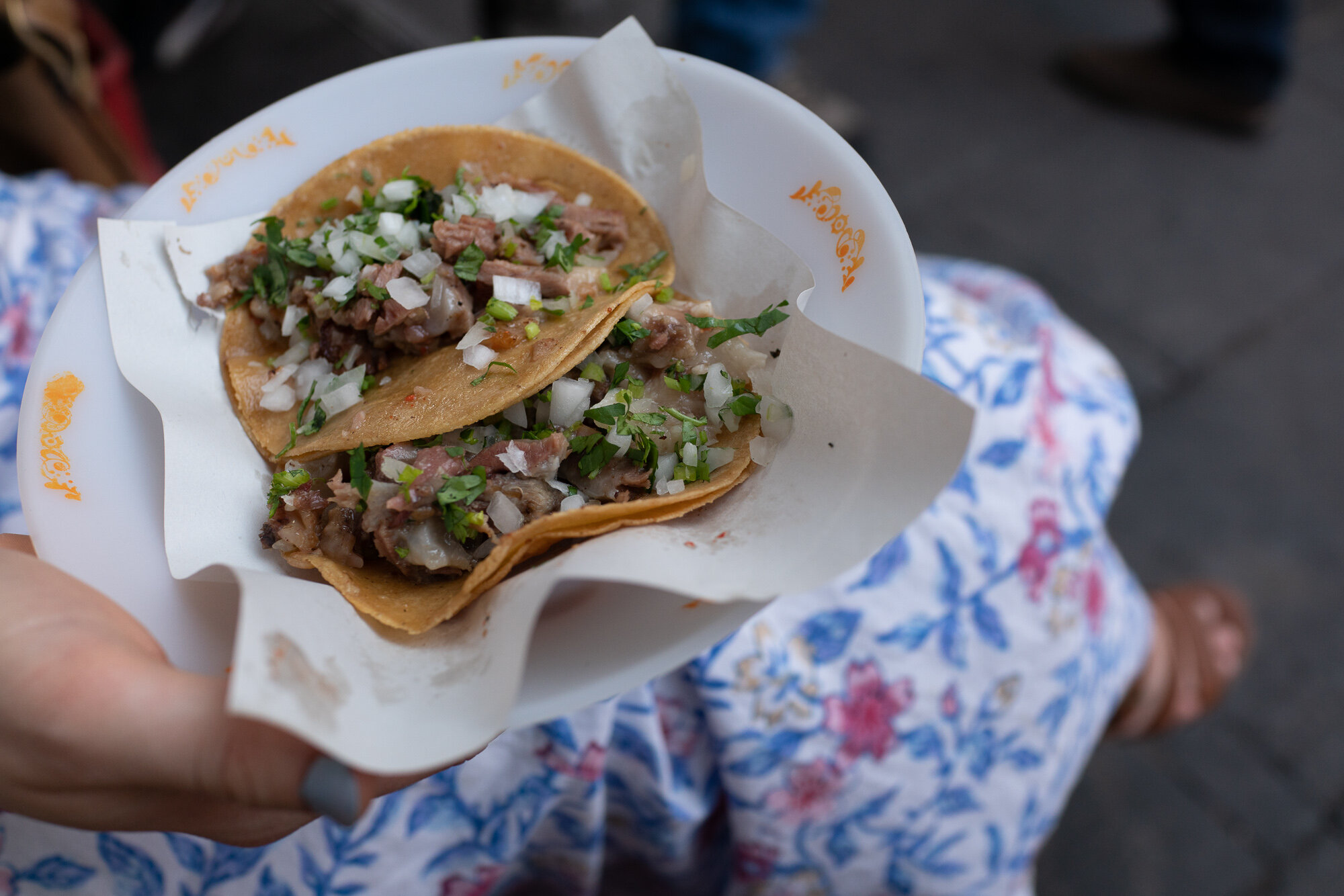SAILING ST. VINCENT & THE GRENADINES
A week of exploring pristine Caribbean islands with friends
My last sail trip with Ben and Leah was a year ago in Thailand, circling the Andaman Sea for a week. Each day on that boat felt like an adventure: countless issues on the aging monohull, losing anchor during a storm, navigating the obvious language barrier, and keeping an eye out for aggressive monkeys while climbing the limestone clifsf of Railay beach .
For this year, we looked for closer to home. We still wanted to tap into an adventure. St. Vincent and the Grenadines (SVG) came onto our radar after seeing it ranked on a list of 20 least-visited countries. After picking our crew, we booked our flights and left the week of nasty weather in NYC behind.
MEETING CANOPUS
Our home for the week was a 42’ catamaran, Canopus, named after the brightest star in the Southern Hemisphere. I was still a bit jet-lagged from a trip the week before, so I was up at sunrise that first day to explore the marina.
Leah and I noted that unlike the other sail trips we had done, the vibe here was a lot more low-key. We were far cry from the mega-yachts owned by Russian oligarchs in Phuket and Sir Richard Branson’s private islands in BVI.
After breakfast, Capt. Jimmy would be doing the chart briefing for us, as well as two other crews departing that day. Just as with any chart briefing, we learned there’d be much more to explore than we could reasonably fit within just a week. Jimmy pointed out some restaurants owned by his friends who we’d have to call in advance, a bat cave we could swim through, and how to deal with the speedboats that would swarm on us when we’d approach land, hoping we’d buy something from them. My eyes glossed over the details on tides, current, and wind direction, assuming Ben would absorb that information.
TO ADMIRALTY BAY
Our first sail would be to the island of Bequia, which I don’t think any of us were able to reliably pronounce. Even though the sail was fairly brief, the swells were enough to make some of our crew seasick. The choppy waves and the strong winds would be a constant throughout the week, which was good news for sailing at least.
Several of took our first dip in the water to snorkel once we set anchor in Admiralty Bay, on the west side of Bequia. Mark and Pryce were the only ones bold enough to jump off the top deck of the boat. As the sun was fading out, we decided to delay making dinner and go ashore to investigate the reggae music blasting from the beach, expecting to find a party.
On shore there wasn’t so much a party as it was just several locals hanging out and enjoying the cloudy sunset. We walked along the beach for some time, watching the light fade into the horizon. Given how close we were to the equator, night fell on us quickly. We wandered aimlessly, and decided to stop by Fig Tree for a few drinks. Besides an elderly couple and the band playing cover songs, we were the only ones in the restaurant. Mark knew all the words to every song played, and eventually found his way on stage. He convinced the restaurant that it was my birthday, which earned me the attention of the entire staff singing to me. Afterward, we all danced in pairs while Mark serenaded Pryce with an Elvis favorite: Can't Help Falling In Love.
Like a river flows surely to the sea, darling so it goes.
Some things are meant to be.
Take my hand, take my whole life too.
For I can't help falling in love with you
We forgot to bring flashlights, so we used our phones to light the way back. A few of us stayed behind, laying down on the dark beach listening to the tide, waiting for the dinghy to drop off the other half of the crew. We were nervous about squeezing all eight of us on the dingy at once, since it wasn’t fully inflated.
I didn’t mind being left behind. The stars were hidden behind the overcast sky. All we could see were the mast lights of sailboats scattered throughout the bay, which was close enough to pretend. When we got back onto the boat, Mark had already prepared delicious burgers for our first dinner together as a crew.
PROVISIONING RUN
I was too tired for sunrise, but I crawled out of bed when I heard we would be going back to shore for a quick provisions run. The sailing guidebook mentioned Doris’ Shop in Port Elizabeth being legendary for their imports, fresh fruits, and vegetables. I didn’t want to miss out on the opportunity to grab good snacks for a week living on a boat, so I tagged along.
After stocking up on the essentials (ice, water, beer, and LaCroix) we got some help from two locals who loaded our dinghy with the supplies and even inflated it. One of the guys had a big laugh and introduced himself to me as ‘Steve McQueen’ and said he gives tours of the island. I introduced myself as Barack Obama, which he found entertaining. His friend, Junior, seemed to like me and asked, “Ey man, so…how bout some ganja, yea?” I told him I wasn’t selling any but that I’d keep him in mind. Steve McQueen found the idea of Barack Obama being sold ganja hysterical; Junior didn’t seem amused.
TOBAGO CAYS
We directed our boat to the south, and after several hours of not seeing land, we arrived at the Tobago Cays. We were most excited about this stop; it was a protected marine park, abundant with sea turtles an extensive horseshoe-shaped coral reef. We even saw turtles poking their heads out of the water right next to our boat.
Leah and I took the kayak over to one of the five islands: Baradal.
It seemed like we had the entire island to ourselves, reaffirming what we had heard earlier about this week being unusually low for tourism.
We hiked the trail to the top and spotted several large, white iguanas curiously eyeing us. The top of the island gave us a wide panorama of the pristine water enveloping us on all sides.
Leah and I made our way back to the kayak, where we had left our snorkel gear. The current was fairly strong, and it was exhausting work trying to keep up with Leah even with flippers on.
I got uncomfortably close to some shallow rocks and scraped some of my body against it. We ended our circumnavigation of the island by coming ashore early early and traversed along the rocky coastline, watching swarms of crabs scurry away into cracks when we’d come close within arms reach.
During the chart briefing, Jimmy mentioned we should call his friend Neil to serve us dinner on the beach. We had made a reservation with our radio earlier that day. Captain Neil said he’d buy the food from Union Island and cook it for us on a beach on Petit Rameau island. In addition to being BYOB, we had to bring our own utensils to eat with. We feasted on mahi mahi, ribs, barbecued chicken, sweet potatoes, plantains, and some fruit that Neil might’ve picked up on his walk over.
Captain Neil shuttled us back to our boat, and we all were amazed at how clear the night was. We were far from any light pollution in the Tobago Cays and it was easy to spot bands of stars smeared across the ink black sky. We turned off the lights on the boat to get a better look while laying on our backs. It was too windy for any cloud cover, and also too windy for stringing up my hammock.
JUST J’S, JAMESBY ISLAND, AND HERMAN
The air-conditioner stopped working overnight on the boat. While laying in bed, I had a flashback to the Thailand sail trip, when the same thing happened and I developed a painful rash from the humidity and unrelenting heat.
During that Thailand trip, Ben had called for a mechanic to take a look. The language barrier, finding a qualified technician in the area, and wanting to keep exploring rather than staying put led us to never get the issue resolved. I was hopeful this time would be different.
After talking over the agenda for the day at breakfast, we took the dingy out to Jamesby, another island in the Tobago Cays. We could see a superyacht emblazoned with the name Just J’s coming into the Tobago Cays. It was an odd sight, given there were only a handful of small boats anchored in the area. We later found out the boat was owned by Jay Schottenstein and his boat has its own Wikipedia page. We later steered our dinghy close the superyacht on the way back to Jamesby, stealing a peek at the gym inside and getting stiff glares from the staff on board.
After snorkeling around Jamesby, we cast off, leaving the tranquil Tobago Cays for the more developed Union Island. We needed some more provisions, notably ice, charcoal, and avocados for Mark who wanted to make guacamole for us. After anchoring in Clifton bay, we dinghy’d over and were instantly greeted by a mostly toothless old man who loudly introduced himself as Herman. He seemed harmless enough, and good entertainment while he followed us around. He then asked if we were looking for any local women to meet. I pointed him over to Pryce as a joke. As we walked past some locals, someone told us to be careful with him and that he was bad news.
We found the one vendor in Clifton bay who had both avocados and charcoal for us to grill with later. Herman wasn’t easy to shake off and stayed with us for the entirety of our provisions run, even yelling out to us as we dinghy’d away.
GOOD VIBES ON HAPPY ISLAND
Our crew was excited to visit Happy Island, a man-made island built in 2002 on top of discarded conch shells. Happy Island, run by Janti Ramage, has grown a bit since then, but it still feels like a a whimsical, makeshift bar floating in the ocean.
We chatted with several other yacht crews, some of whom had started in other countries. The guys working the bar called me inside to talk to me. This happened a few times and I assumed I looked more intriguing than the other tourists since I wasn’t white. I ended up becoming friends with Alphonso and helping him set up his business on TripAdvisor.
That evening, Leah and I lay on top of the boat watching the sunset paint the wisps of clouds orange and magenta, stretching across the horizon. I read my book aloud to her, finishing Royal Robbins’ autobiography just as it became too dark to make out the final words on the page. We grilled steaks with the charcoal we acquired earlier, using the local brand of “Sunset - Very Strong Rum” as a fire starter. Leah put on some music and we danced. We did our best with the boat tossing and throwing our feet.
HIKING THE PINNACLE
We woke up to a broken air-conditioner again. This time we knew how to fix it, fishing out seaweed that was blocking an essential pipe. After a quick breakfast, several of us took the dinghy ashore with plans to hike The Pinnacle, a peak on Union Island. Most of the hike had us walking through the town and on an unshaded road.
Although we had planned to beat the mid-day sun with an early start, the heat was already bearing down on us as we plodded our way up. There wasn’t much traffic on the road, but we were kept company by a curious dog that followed us from the dingy landing. Caitlin named her “Hot Sauce” and we wondered if she’d follow us all the way up. We passed several homes, guarded by loud, angry dogs. It wasn’t clear whether they were more upset at us being potential intruders or if they were more interested in intimidating Hot Sauce. Ben joked that all the dogs on the island looked the same, and were probably related.
We were relieved to find the trailhead, which signaled an end to the incessant barking, but also the start of a shaded path. Most of the trail was either prickly or slippery from loose dirt. The trail eventually turned blocky and we were scrambling up on all fours. Hot Sauce couldn’t keep up any longer and ditched us.
Once above the scrambling, we were just a hike along a ridge to the summit. There was a steady, cool breeze lapping at our faces when we were above the tree line. We sat here for a while, and I tried to see if I could spot our sailboat in the bay.
On the descent, we found Hot Sauce waiting for us right where we left her. I figured there must not be much to do for a stray island dog.
GYPSEA CAFE AND CHARLIE BROWN
We regrouped in Gypsea Cafe, which looked like it belonged in a hippie beach town in California. The chalkboard sign outside noted sunset yoga, açaí bowls, and green goddess smoothies. The local woman who ran the shop clearly knew how to get tourists like us in, and keep us there.
After resting up, half the crew went to park the boat at the water-filling dock nearby. Our boat was low on clean water for the second half of the week. From the perch on the cafe balcony, I could spot our crew carefully maneuvering their way toward us. We went down to meet them.
While waiting for the tank of water to fill, I stood on the dock watching the meter slowly rise up, having no idea when it’d stop. The guys running the pipe were laying under the shade of a gazebo. They seemed bored and weren’t saying much, listening to music playing from one of their phones. Mostly it was quiet though, with the hum of the generator funneling water.
One of the guys called me over, and I assumed he wanted to clarify something about the cost of the water. Instead, he just wanted to talk. He introduced himself as Charlie Brown, which I initially thought was joke. I said I liked his hat and he said his mom gave it to him when he was a little boy and that he cherishes it. We talked about how crazy Herman from the day before was, which they were all too familiar with: “Yea mon, that muthafucka has some screws loose I tell you.” I asked if he had ever been to New York City, and he told me about an uncle who lives on Flatbush and Utica Ave in Brooklyn, whom he visited in the 80s. Charlie Brown said he loved NYC, but it was the craziest place he’d ever been. I believed him.
His friend Rodrick introduced himself to me and said he liked that my name sounded similar to his. Just before the water tank topped off, I asked them if they’d trade a portrait for two of the coldest beers from our cooler. Rodrick quickly stepped onto the dock and said, ‘Okay mon, let’s go! You want the full dreads!?”, while patting his beanie.
PRIVATE ISLAND LIFE
We briefly stopped by Palm Island, which was easily the most picturesque island I had seen from the boat. The island got its name because the former owners, Johnny “Coconut” Caldwell and his wife Mary, planted hundreds of palm trees, and transformed the swampy, deserted island. They sold the land and a private resort was developed.
We dingy’d ashore and were immediately introduced to the island security. They were friendly but laid down some rule: we’d have to wear shirts if entering the beach bar, and the only area accessible to us would be the rocky area far from the shade of the famous palm trees. We violated that rule several times, mostly by accident and partly because we didn’t quite believe they were serious.
Even though our designated area wasn’t smooth beach manually brushed clean of yesterday’s footprints, our rocky hangout did have a chain moray eel protecting her eggs. Once we got into the water, Leah and I saw some of the best snorkeling of the trip.
The watchful eye of the guards on the island became a bit too overbearing, and we were interested in getting to our next destination: the island of Petit Saint Vincent (PSV).
Before we set off for PSV, Ben told me to chase the anchor line with him. I was confused, but interested. He didn’t say much beyond, “Grab your snorkel mask, leave the flippers. Follow me to the front!” When I caught up to him, he jumped off and I went in right behind him. He then told me to grab onto the heavy, steel anchor line and, hand over hand, pull myself downward as far and quickly as I could go before the pressure or lack of air got to me. I was terrified of the idea. Snorkeling was easy, but swimming for over a minute exhausted me because of my poor technique. There must have been too much adrenaline in me at that moment, so I went for it anyway. All I could see underwater was the chain and my hands rapidly reaching to accelerate me downward. I started to feel the pressure on my ears and in my chest, but I went further. Finally, I let go and floated up toward the light, floating for what seemed like forever. When I got to the surface, Ben and I were ecstatic and high-fived each other. The rush was amazing and my heart was racing still when we decided to go for a second time. Ben later said he thought we descended over 25 feet based on markings in the anchor line.
It was close to sunset when we anchored off of PSV, and a few of us went on shore with the dinghy to check it out. PSV was also a privately owned resort but they billed themselves as an eco-friendly luxury boutique retreat.
Unlike at Palm Island, we weren’t greeted by anyone informing us of the rules. We didn’t see anyone really, except a staff member who waved at us as he biked along the path. Besides feeling less policed, we liked the vibe a lot more. The resort has only 22 small stone cottages for guests, secluded throughout the island. I later read that the cost for a 2-person cottage would be at least ~$1,500 per night depending on the time of year. Included in that price is the luxury of raising a flag outside of your cottage to get the attention of a passing staff member. We, of course, paid nothing and ignored the signs marking the hammocks as private for the guests only.
Some of the crew had stayed behind to prep dinner; the other half was too eager to visit PSV with the little sunlight remaining in the day. We had promised them we’d be back by a certain time to help out, but the fading glow of the sunset drew us in for just a tiny bit longer.
Before stepping off PSV, Leah and I were already scheming of waking up early to explore the island, uncertain whether the lack of security was just timing and luck on our part.
THE SUN RISES ON PSV
We woke up to a still morning and a cotton candy sky above our heads. Leah and I lowered the kayak, careful not to wake the others. It was an easy paddle in, and we pulled the kayak in just a bit more on the beach to be discreet. Fortunately, for the entire hour we were there, no one else was in sight.
Leah and I found a trail to the high point of the island, from which we could see more of Grenada just a few miles away and within reach. We wouldn’t be venturing to Grenada though, not unless we were willing to deal with checking in and out of customs.
After Leah and I returned to the boat, Mark and Pryce took the kayak to explore PSV. Unlike us, they were turned around before the nose of the kayak touched the beach.
WELCOME PARTY
Today’s plan was entirely to get back to the main island of St. Vincent from which we started, retracing the path we covered over several days. It would be a long sail, covering over 50 miles, but we’d have good wind and current; we had to do little more than just point our boat in a certain direction and cast off.
Most of the sailing happened without sight of land in any direction. There wasn’t much to see besides the heavy blue swells rising and falling, as if the ocean itself was breathing. I was reading for most of it, poring over a 2014 copy of Accidents in North American Mountaineering. My mind drifted in and out: shuffling around the boat for shade and imagining high-angle rope rescue over a glacier.
Our destination was the more lush, windward side of the large, main island of St. Vincent. This side of the island was steeper and more rocky. It would be the first place where I’d see a black sand beach. Our ultimate goal was to be within distance to hike La Soufrière volcano, which last erupted 40 years ago.
An hour before arriving we all sat up front, watching the island grow larger in the horizon. The plunging, deep valleys clawed into the landscape had formed from consistent rainfall erosion, and came into focus as we sailed closer. The thick tree cover excited a desire in me to explore canyons and waterfalls that I was certain were hiding underneath.
Our awe with the scene was replaced by annoyance when we were a few miles away from Kearton bay, where we’d spend the night. We were swarmed by small speedboats on all sides, driven by locals guys selling things. They seemed interested in selling anything, including the mooring which didn’t belong to them. We had been warned about this from Capt. Jimmy about the “boat boys” during the chart briefing, but didn’t expect we’d be repeating ourselves for a half hour saying no to the fruits and jewelry being sold. Some drifted away when they realized we wouldn’t budge. Some became angry, and others weren’t subtle when they told us, “Just buy something and we’ll leave you alone.”
Once they left, a few of us headed over to Rock Side Cafe, which owned the mooring balls in the bay. The restaurant was owned by Orlando and his wife Rosi, a German woman who moved here almost two decades ago. We didn’t feel comfortable at all leaving the boat unattended, so we purchased fish from Rosi and grilled it ourselves. I wondered whether we were overly paranoid, and asked Rosi what she thought. She said we were being too sensitive. I later read a review on TripAdvisor about someone finding out their boat had been robbed of all their jewelry while having dinner at Rock Side Cafe. Fortunately, nothing happened to us while we were there.
HIKING THROUGH THE FARM
Our plan to hike La Soufrière never materialized; we hadn’t woken up early enough for the 10-hr trek. We were advised to hire a local guide for safety and found Randolph, who seemed nice enough and not pushy at all. He said he’d give us a tour through the farmland and the town.
Randolph led our group along the main rad, and we passed by people sitting outside homes, starting the morning. I waved to everyone we passed. They all knew Randolph and spoke to him in Vincentian Creole, not a single word of which I could catch.
The path out of town faded from pavement to dirt gradually as we ascended. Occasionally, Randolph would stop and use a long stick to whack at the stem of a piece of fruit. He pulled wax apples, breadfruit, and lots of sweet mangos that we’d bite right into. It seemed silly to have a snack bar in my backpack with so much free food around me. It wasn’t easy eating the mangoes though without getting thick, sticky juice dripping down my wrists.
We hiked further along and found ourselves on a ridge line overlooking the town. Randolph explained that there were several ganja farms around. We ran into a farmer, who gave Randolph a fat joint which he smoked on the descent. He told us about the hard life and hours in the sun for a ganja farmer to make a decent living, in addition to being on the lookout for police whose motives were sometimes questionable.
Neither of us were particularly interested in the Pirates of the Caribbean museum, but it was along the way on Randolph’s tour. All of the films in the series had been shot in St Vincent so it was a point of pride it seemed. Many of the locals insisted they were in the movie as extras. Randolph said he played the role of a fisherman. None of us believed him and later watched the movie on the flight back. We didn’t see Randolph, nor anyone from the island for that matter.
The museum was supposed to be a collection of props from the set, but was more like an outdoor costume shop selling pirate things. It looked more like an unofficial Pirates of the Caribbean-themed restaurant than a museum. We moved on and made our way over to Wallilabou Falls, a small waterfall in a park adorned with tropical flowers. We made our way back to the boat and shared a beer with Randolph. We paid him $15 USD each for his time and gave him some of the uncooked food that we weren’t going to finish.
LUNCH AT ROSI’S
Although we hadn’t hiked anything close to what we would’ve done on La Soufrière, being out in the sun was exhausting. We decided to have lunch at Rock Side Cafe.
It was still early in the day, so Rosi had to go to the market to buy the mahi mahi, steak, and chicken that we’d be eating family-style. Once she was back, we helped her out by setting the table.
Rosi showed us a collection of about a hundred or so jazz records she just inherited from a friend the day before. I wished that I asked her to play a few songs earlier.
FORT DUVERNETTE AT SUNSET
We had a few minutes of sunlight left when we arrived to Fort Duvernette. Our anchoring for the night would put us within eyeshot of the marina from which we started. We’d be returning the boat tomorrow. With the little light we had left, we dinghy’d over to Fort Duvernette, a large island of rock jutting out of the sea.
There was a staircase of 255 steps carved into the rock that went to the top. The fort was built by the British in the 1790s to protect against pirates hijacking ships carrying sugar produced with enslaved labor. The fort also played a role in the hostilities between the British and the Garifuna, an indigenous group originally from St. Vincent. With aid from the French, the Garifuna fought off the British for almost three centuries successfully, nearly taking control of the island. After one skirmish, it was recorded that the British forces retreated to Fort Duvernette. The threat from the Garifuna, before they were eventually exiled to Central America and beyond, explains why some of the cannons on the fort pointed inland toward St. Vincent.
The sun had set by the time we made it back to our boat and we avoided the storm that would drag on for a few hours. Mark treated us to his amazing bibimbap again for dinner. Thanks to his enthusiasm and craftiness in the kitchen, we were even more spoiled than we expected for the entire week of the trip. Over dinner we went around the table and talked about our favorite moments. Being able to experience the solitude with Leah on Petit St. Vincent was my highlight.
LAST DAY ON THE ISLAND
We returned the boat to the marina without issue. The marina was packed this week, and I had a better understanding of what everyone meant when they told us we chose an unusually quiet week to charter a yacht.
Leah and I packed up quickly, since we didn’t bring much. We headed over to get drinks nearby. Our group reconvened at 4 Shells Joint where we had a delicious red snapper for lunch. We then packed our suitcases into a taxi and left for the airport. While driving up the windy and hilly roads, I wondered when I’d be back, and what the island would look and feel like with some years between this visit and my next.
I’m thankful for the warm friendliness of the people of St. Vincent and the Grenadines, even the kooky folks like Herman. There was so much beauty and richness that were able to see firsthand. I’m grateful that our crew was a joy to adventure with and that we were led by our very capable and strong skipper, Ben.
Most of all, I’m happy that I got another memorable experience with Leah, adding to that forever-growing set of stories that we share together.
Thanks for reading and hit me up with any feedback or questions.
Put SVG on your list of places to go! It’s a remarkably under-appreciated paradise.












